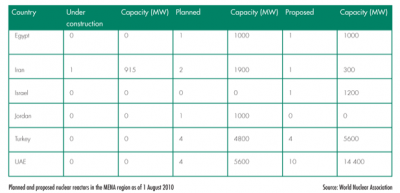 Cutting your teeth in the PR business of clean technology? David Goldman from Expansion Media offers 5 tips that can help you and your clients get noticed.
Cutting your teeth in the PR business of clean technology? David Goldman from Expansion Media offers 5 tips that can help you and your clients get noticed.
On the heels of the Brightsource announcement today as well as the 60 Minutes segment that focused on stealthy and well-funded Bloom Energy and the flood of news coverage that will ensue followed closely by the likely increase in the Israeli Solar company’s valuation, I am reminded of the power of Public Relations.
 Most clean technology companies that are based in the Middle East might not have hard news just yet of the likes of Brightsource or Bloom Energy, but they can still use the power of the media/blogosphere to generate credibility and a sense of traction within their industries.
Most clean technology companies that are based in the Middle East might not have hard news just yet of the likes of Brightsource or Bloom Energy, but they can still use the power of the media/blogosphere to generate credibility and a sense of traction within their industries.
No other sector in the economy grew as fast last year and none is projected to grow as much this year as cleantech. This was due, in large part, to the stimulus money from around the world that flowed freely (even in a down economy) into the growing clean or green technology sector.
I’m sure we all noticed that nearly every magazine featured a “green” issue last year.
Consequently, larger PR firms have been launching cleantech practices and smaller boutique firms have emerged to manage the flood of new technologies ranging from electric vehicles to biomass, smart grid players, green building technologies and too many others to list here.
Furthermore, even larger traditional consumer brands are now demanding to have a “green” strategy in their communications plan. That is great news. The only question is: From where will all of these communications professionals come to manage these new accounts? My guess is that biotech, healthcare and technology PR practitioners will initially service cleantech accounts.
My background was in emerging consumer tech PR, which I thought would prepare me for cleantech. Let’s just say I had a rude awakening. Not only are the technologies completely different, but the clients themselves proved to be equally mystifying. It took me a while to get used to the world of cleantech as a communications professional, but eventually I did. I thought it might be useful to share some of the insights I picked up along the way. As a good friend once told me, “Why live and learn when we can learn and then live?”
Want to learn some tricks of the trade? Here are 5 tips for clean tech public relations companies and reps to follow:
1. It is rocket science! Everyone knows that any marketing professional worth their weight in salt should bone up on researching their clients even before they begin working on the account. However, understanding the consumer-facing technologies that most of us are accustomed to using (in my case, Google, eBay and XM Radio were clients) is entirely different than understanding scientific innovations.
Explaining bioremediation flex capacitors or ammonia recovery technology demands a far more intimate knowledge of the underlying science than explaining an iPhone or the Kindle. And make no mistake, you will need to know your cleantech client’s technology well.
Unlike the consumer tech world, where we all speak the same with the same vernacular (cloud computing, web 2.0, social networks, syncing, clicks to conversion, etc.), your cleantech clients (especially at the upstart stage) tend to be scientists. In some cases, your clients will literally be rocket scientists.
The trick is that there are no tricks. We all have to learn and to understand exactly what our clients do and what media will drive their business goals. To accomplish this, read up on their field in the trade publications.
Here are some suggestions that will provide a nice overview of cleantech in general:
earth2tech (a division of GigaOm)
Dow Jones Clean Technology Insights
A good primer for the cleantech space is Thomas Friedman’s book “Hot, Flat and Crowded.”
Experience has taught me that your clients will also be looking to be placed in niche industry publications more than in mainstream media. Oftentimes this is a good thing. These niche publications are understaffed and open to content that you create on behalf of your clients; I will say more on that later.
Tech-geeky has already become chic, largely due to the communications professionals who helped turn people like Steve Jobs, Mark Zuckerman, Sergey Brin and Jeff Bezos into media darlings. Our job will be to take advantage of the momentum that “cleantech,” “sustainability” and “renewable energy” currently have, and to transform these socially awkward scientists into media friendly spokespeople for a new age in technology.
2. Content (creation) is king. According to Adam Werbach’s book, “Strategy for Sustainability,” companies need to be aware of how their industry is influenced by the current culture, and how to adapt.
I probably don’t have to tell you that today more than ever, PR people are in the content creation business. At no other time and in no other industry is content creation more effective as a communication strategy than in the cleantech space. What do you do when your client has no news? Start digging up case studies and transforming them into bylined articles.
Due to the ever-shrinking newsroom, editors at cleantech publications (or any other industry for that matter) are in dire need of free content that they can monetize with advertising. This is the holy grail of PR people everywhere: That’s right—a guaranteed placement!
If executed well, this can be the secret to your success. Our firm landed four articles in trade publications for BioPetroClean, a client of ours that focuses on bio-remediation with offices in Houston. All of the content was created in-house—our team of Expansion Media writers working with BPC’s lab technicians and marketing people.
The message was 100% controlled and all parties were pleased with the results. But again, the challenge is understanding the technology. Any writer can pull together a case study on consumer electronics; writing about new trends in wastewater management requires time and training with the client.
3. Major influencers are closer than they appear. Don’t be afraid to reach out to even the top media as long as what you have to offer is appropriate. In a specialized field like cleantech, the media hasn’t yet become knowledgeable enough to be cynical about the space.
For example, we found out that FreeGreen, one of our clients that offer free greenhouse plans to consumers, was listed as one of the “free business” models mentioned at the end of Chris Anderson’s (editor in chief at Wired) now famous book, “Free.”
We took a chance and reached out to this controversial editor with a pitch asking him to follow up on the company one year later. He responded immediately, and he won’t be adding our names to his infamous list of flamed PR people because our pitch focused on the subject matter of his bestseller, to boot. As long as your pitch is appropriate, there’s no reason not to pitch even the most sought-after journalists or to assume you will never hear back from them.
4. Build a brand. Yes, even small cleantech startups with no consumer focus should work on building a brand. A small solar panel outfit can benefit years down the road from a home buyer asking for their specific solar panels. If it worked with Anderson Windows and Intel inside computers, it can work with wind turbines, lithium-ion car batteries or solar panels.
5. Talk the talk. One of the daunting aspects of cleantech PR is becoming familiar with a whole new battery of acrimonious acronyms. Forget DMA (does anyone remember it?) and IR. For the PR professional that is branching out into cleantech, there are dozens of new terms and organizations to become familiar with. Whether your client is a wind turbine company (anemometer, generator set, tip-speed ratio) or a smart grid player (distributed generation, load, microgrid), you will do well by reading up on Wikipedia before that first client meeting.
In the meantime, here is a quick glossary of useful terms for your immediate reference:
• AC: alternating current
• Btu: British thermal unit
• CAFE: Corporate Average Fuel Economy
• ISO: Independent System Operator
• CT: Combustion turbine
• DC: Direct current
• DOE: U.S. Department of Energy
• EER, SEER: Energy Efficiency Ratio, Seasonal Energy Efficiency Ratio
• ESCO: Efficiency Service Company
• EV: Electric vehicle – a vehicle powered by electricity
• GW: Gigawatt
• GWh: Gigawatt-hour
• HVAC: Heating, ventilation and air conditioning
• Hybrid vehicle: Usually a hybrid EV, employs a combustion engine system along with an electric propulsion system.
• ISO: Independent System Operator
• kW (small k, capital W): Jilowatt
• MW: Megawatt (a million watts)
• NIMBY: Not In My Backyard
• PBP: Payback period
• PPA: Power purchase agreement
• PV: Photovoltaic
• RE: Renewable Energy
• VOC: Volatile organic compounds
David Andrew Goldman currently works as director of global communications at Expansion Media, an integrated PR/SEO firm that focuses exclusively on clean technology clients including Entech Solar, BioPetroClean, CASTion Airdye Solutions, Advanced Telemetry, Variable Wind Solutions,GreenRay Inc. and FreeGreen.com.



